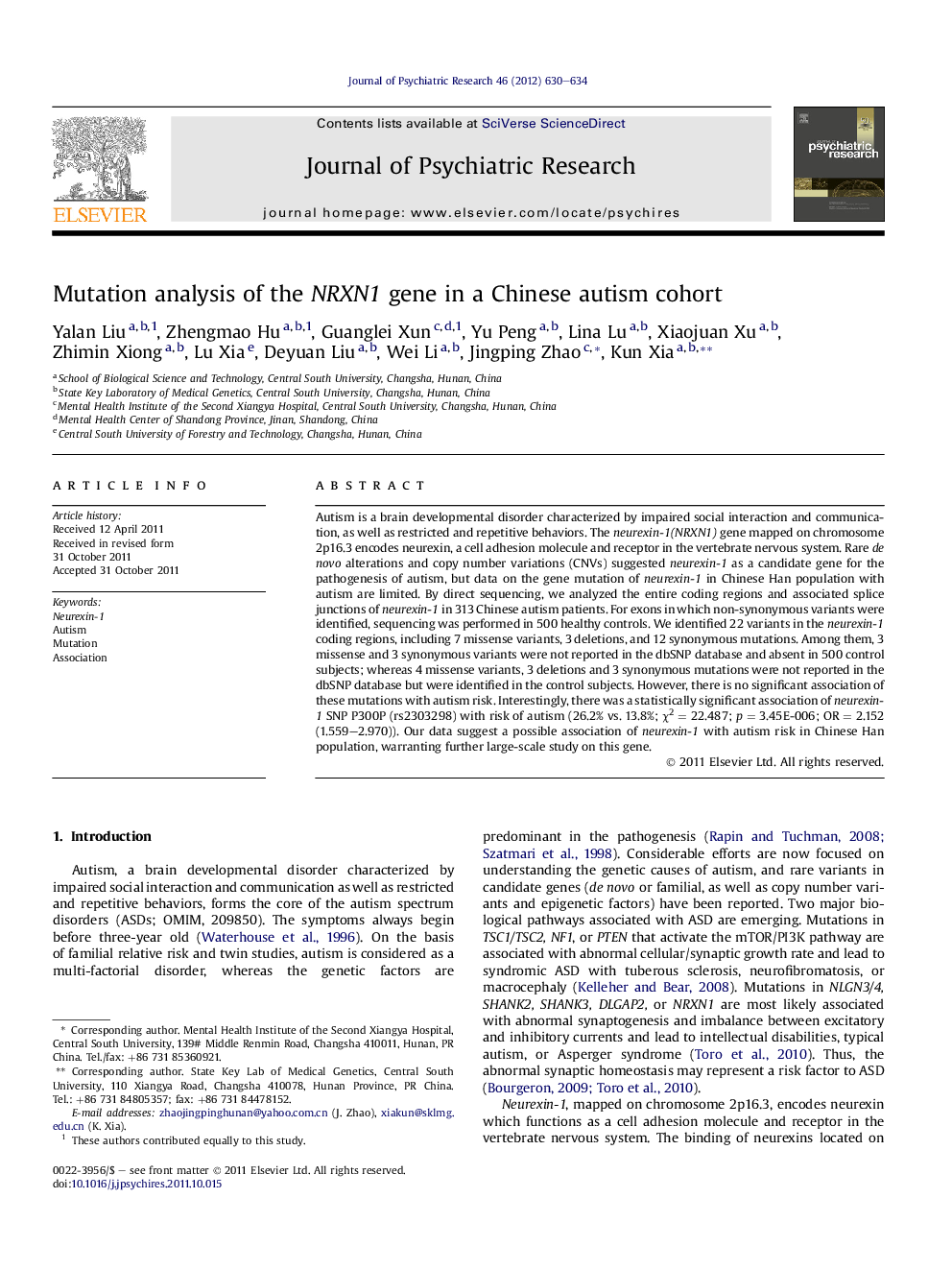| Article ID | Journal | Published Year | Pages | File Type |
|---|---|---|---|---|
| 10302372 | Journal of Psychiatric Research | 2012 | 5 Pages |
Abstract
Autism is a brain developmental disorder characterized by impaired social interaction and communication, as well as restricted and repetitive behaviors. The neurexin-1(NRXN1) gene mapped on chromosome 2p16.3 encodes neurexin, a cell adhesion molecule and receptor in the vertebrate nervous system. Rare de novo alterations and copy number variations (CNVs) suggested neurexin-1 as a candidate gene for the pathogenesis of autism, but data on the gene mutation of neurexin-1 in Chinese Han population with autism are limited. By direct sequencing, we analyzed the entire coding regions and associated splice junctions of neurexin-1 in 313 Chinese autism patients. For exons in which non-synonymous variants were identified, sequencing was performed in 500 healthy controls. We identified 22 variants in the neurexin-1 coding regions, including 7 missense variants, 3 deletions, and 12 synonymous mutations. Among them, 3 missense and 3 synonymous variants were not reported in the dbSNP database and absent in 500 control subjects; whereas 4 missense variants, 3 deletions and 3 synonymous mutations were not reported in the dbSNP database but were identified in the control subjects. However, there is no significant association of these mutations with autism risk. Interestingly, there was a statistically significant association of neurexin-1 SNP P300P (rs2303298) with risk of autism (26.2% vs. 13.8%; Ï2 = 22.487; p = 3.45E-006; OR = 2.152 (1.559-2.970)). Our data suggest a possible association of neurexin-1 with autism risk in Chinese Han population, warranting further large-scale study on this gene.
Keywords
Related Topics
Life Sciences
Neuroscience
Biological Psychiatry
Authors
Yalan Liu, Zhengmao Hu, Guanglei Xun, Yu Peng, Lina Lu, Xiaojuan Xu, Zhimin Xiong, Lu Xia, Deyuan Liu, Wei Li, Jingping Zhao, Kun Xia,
